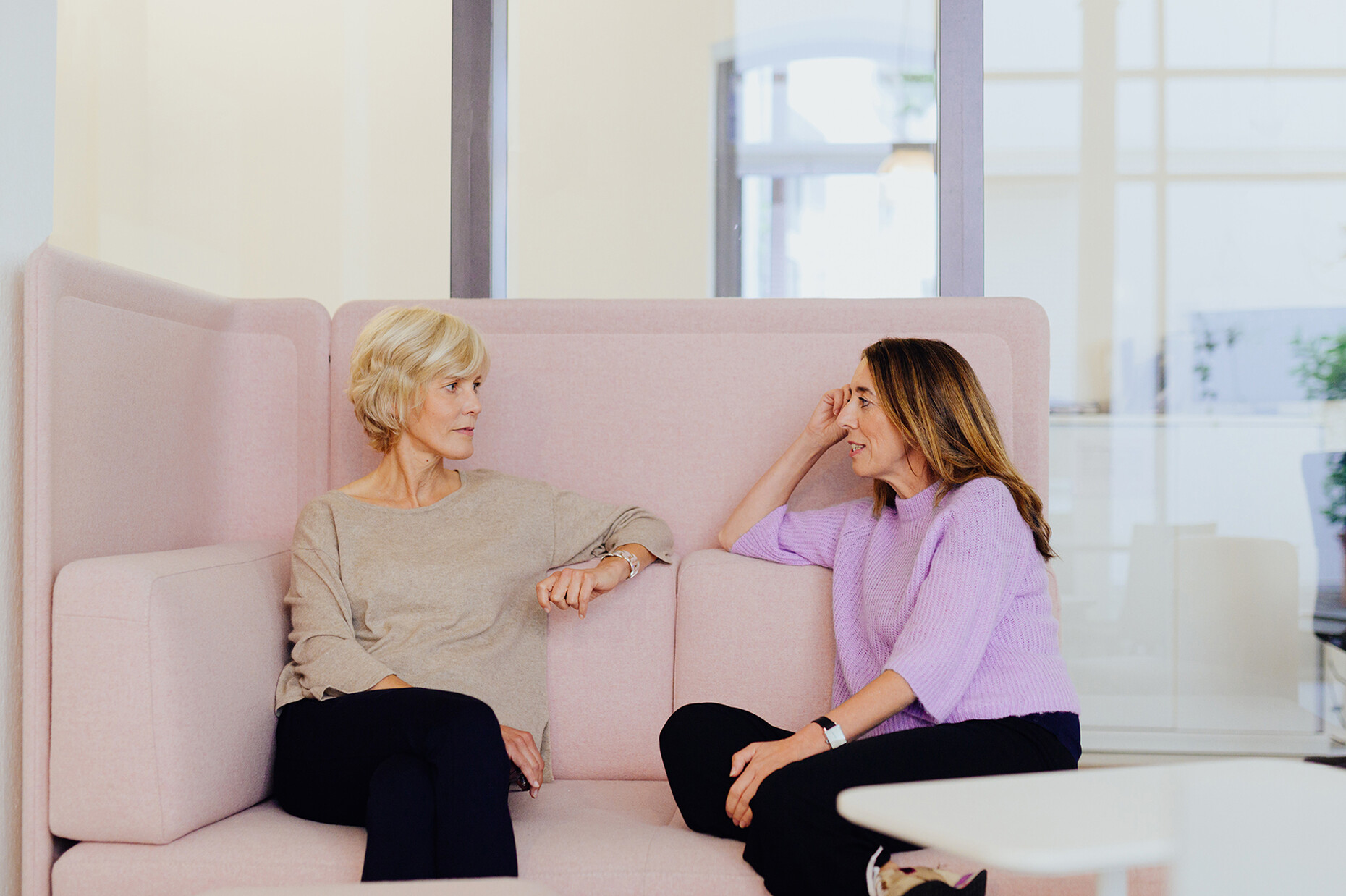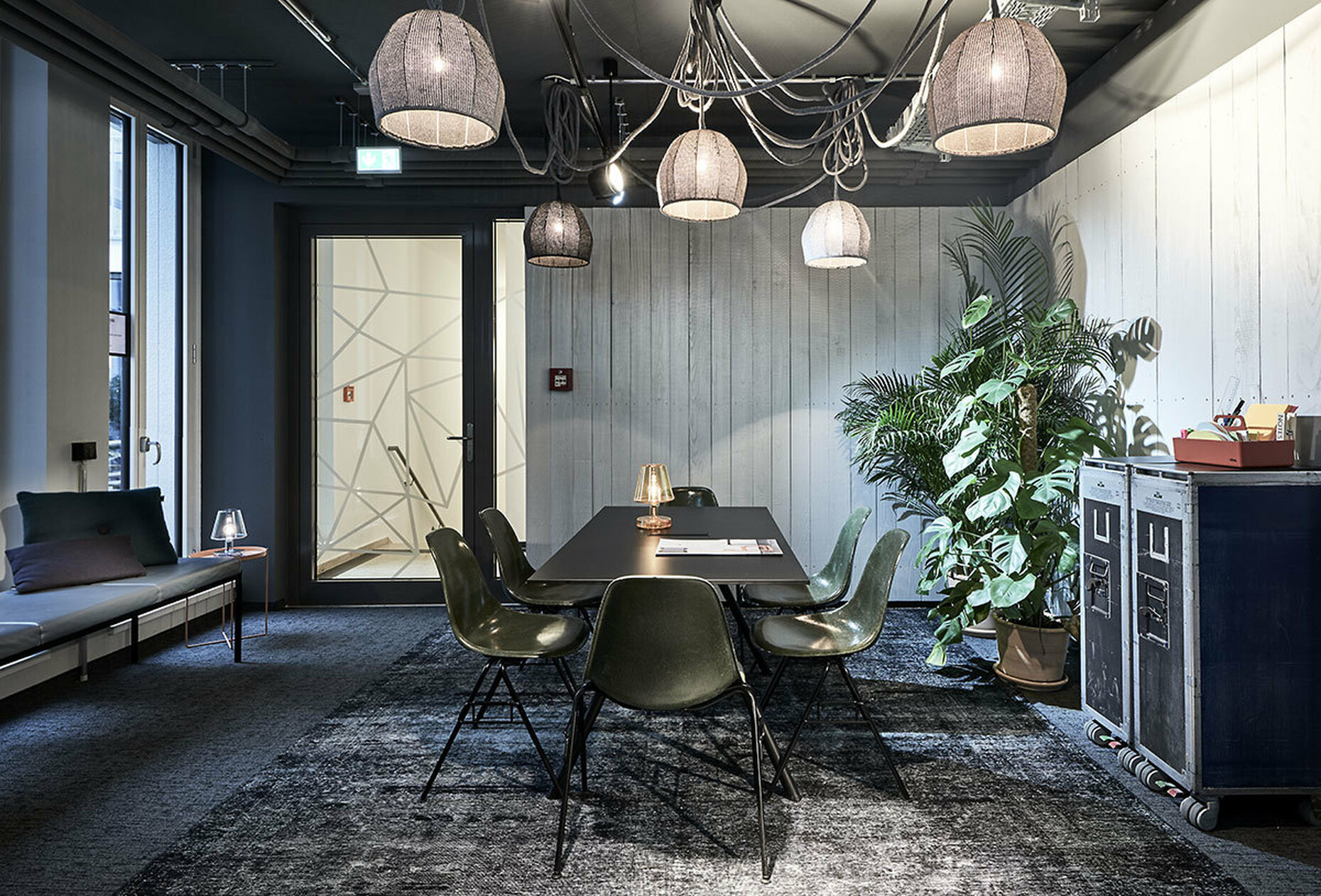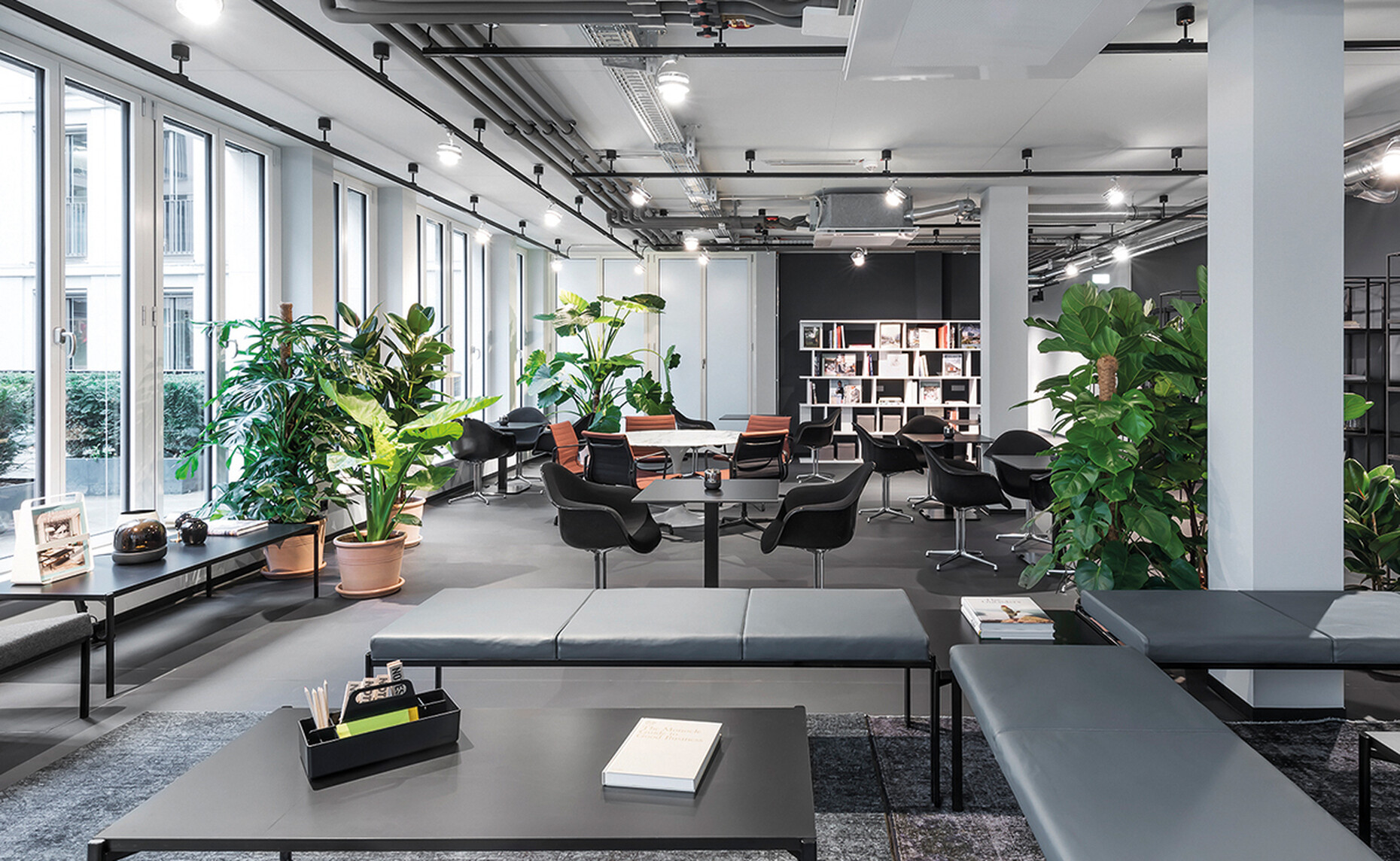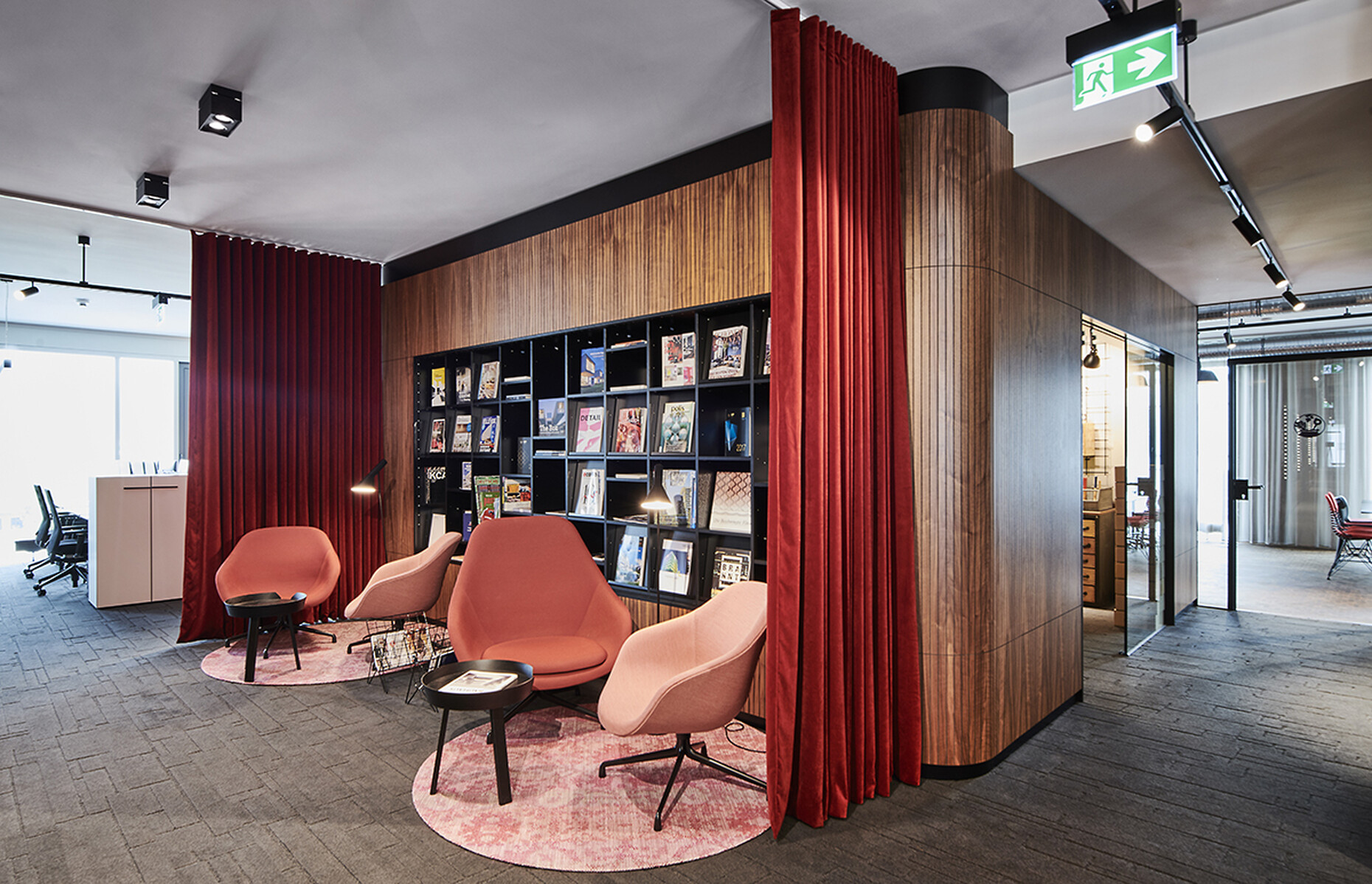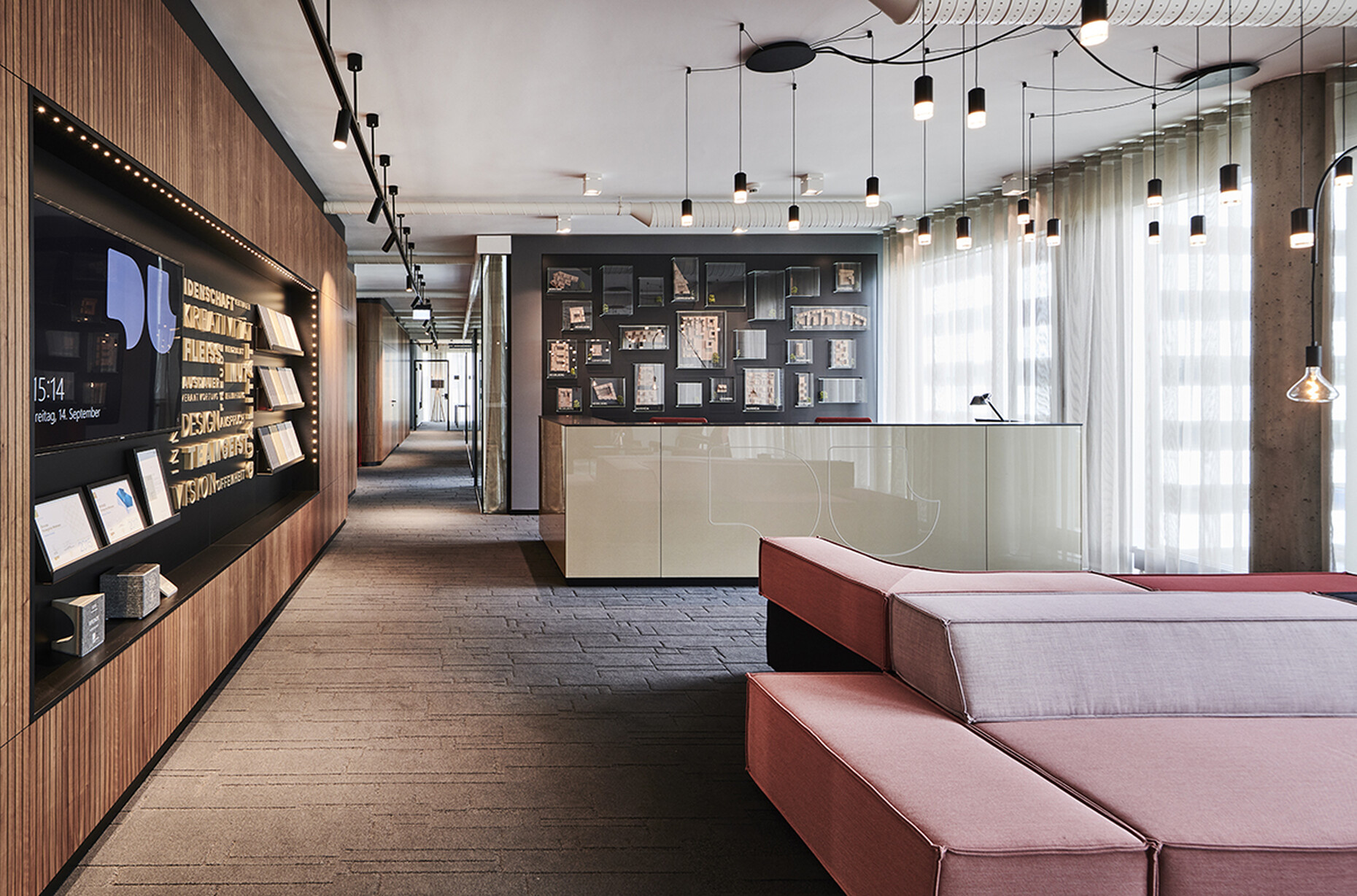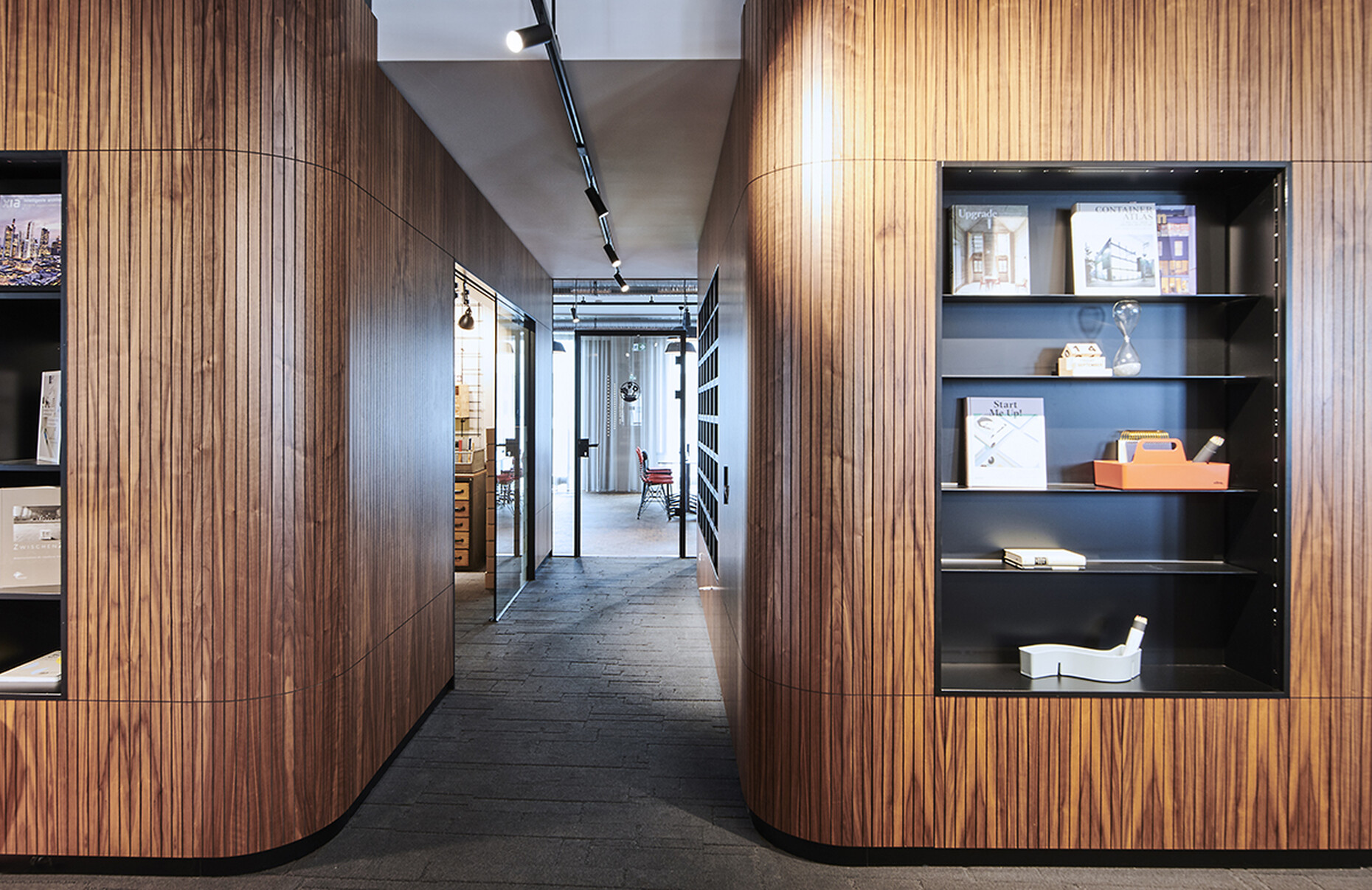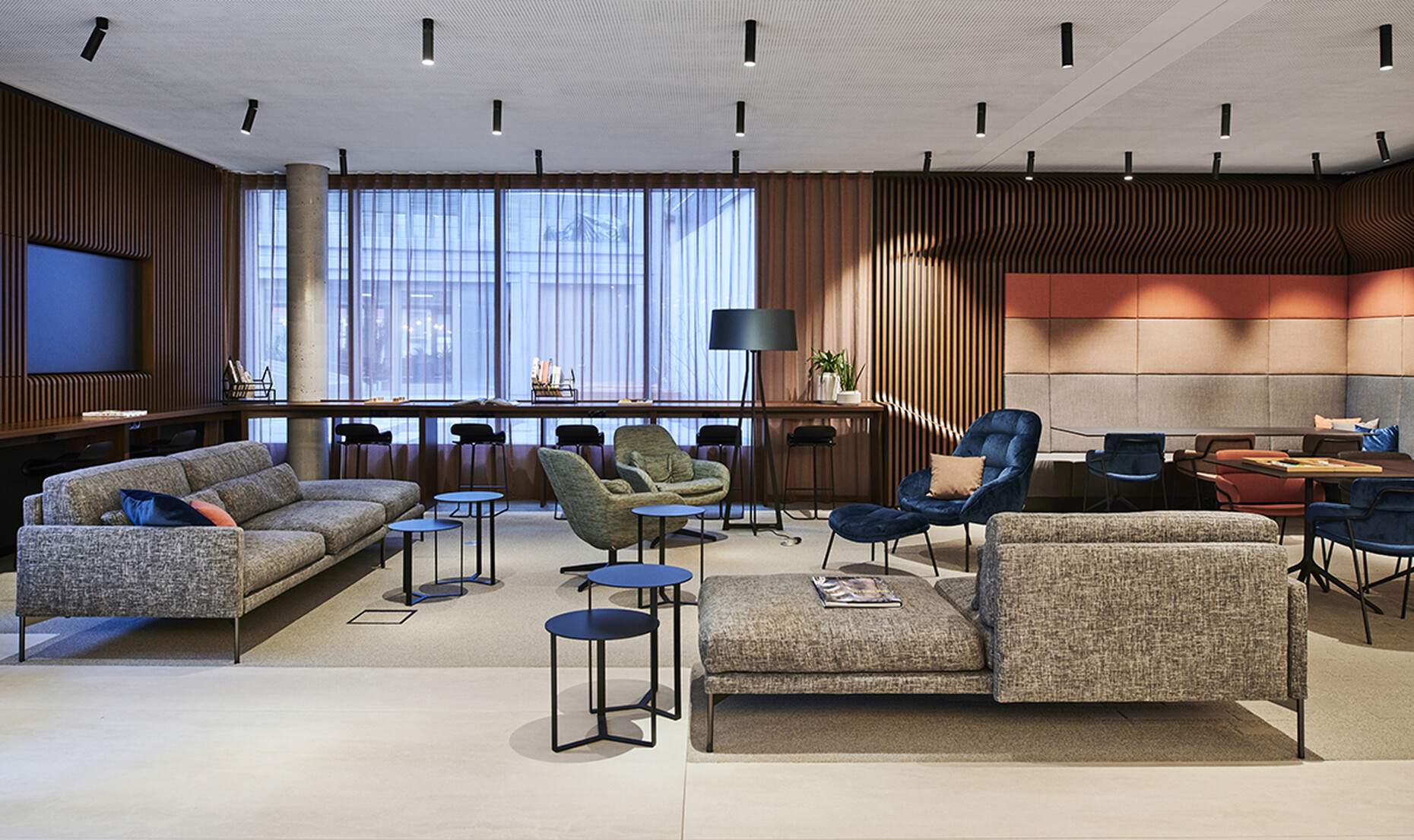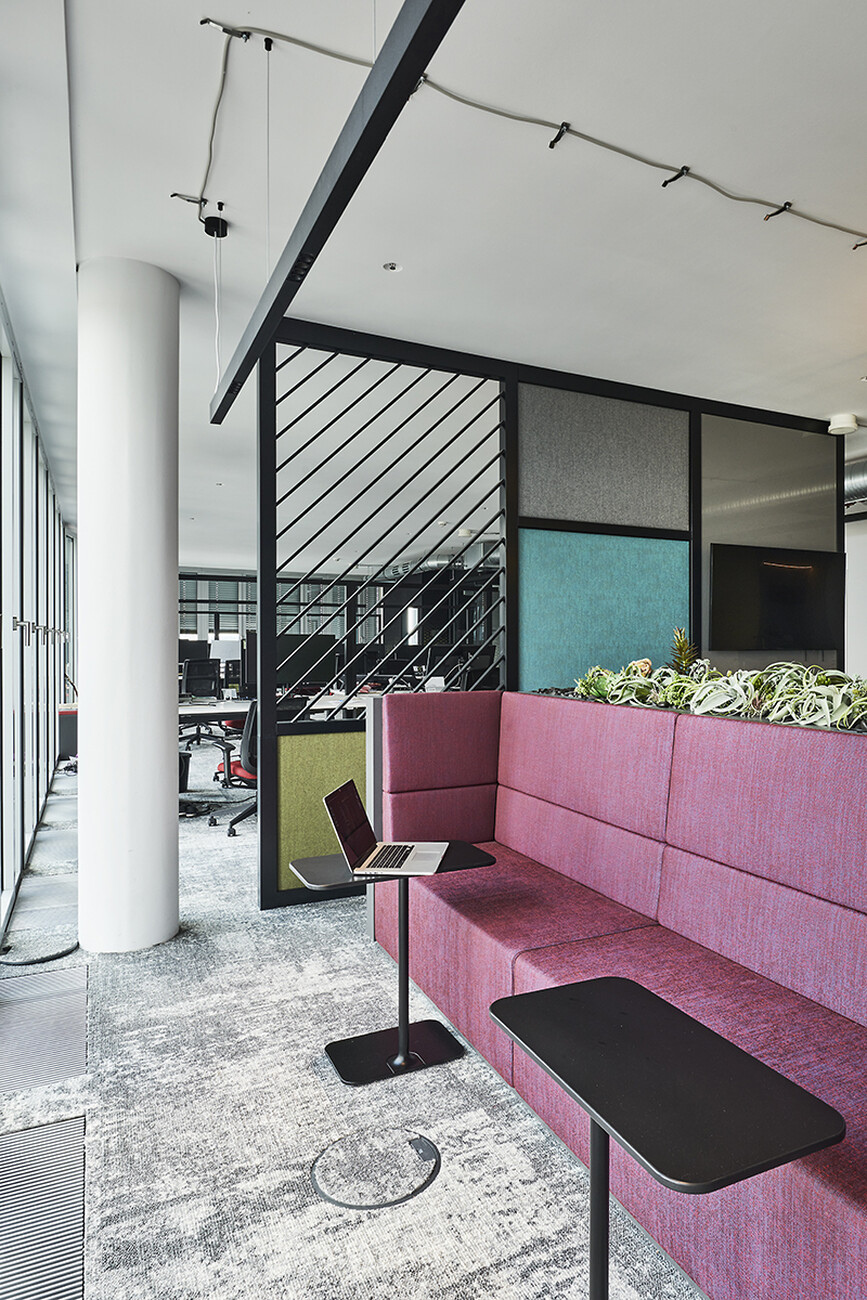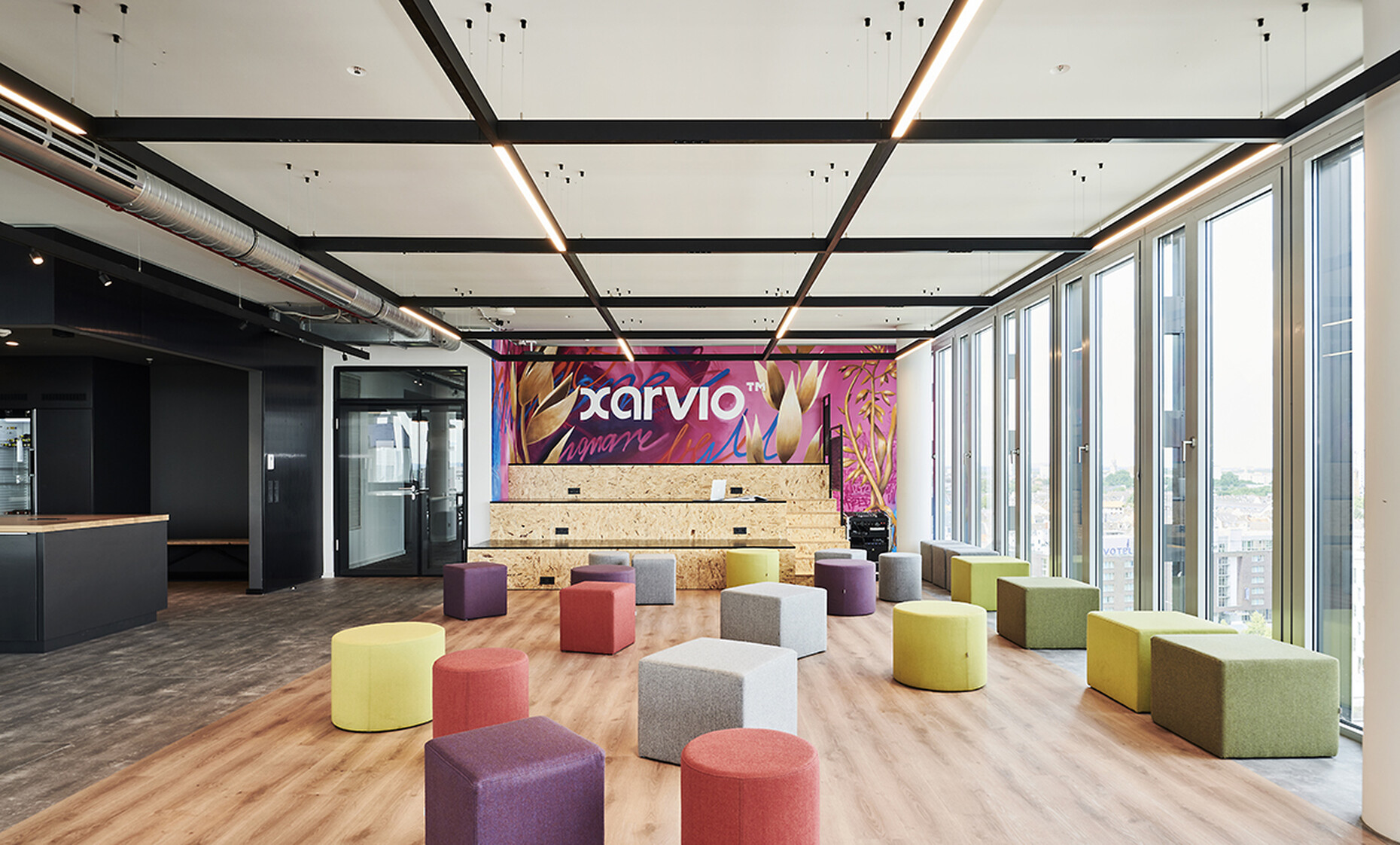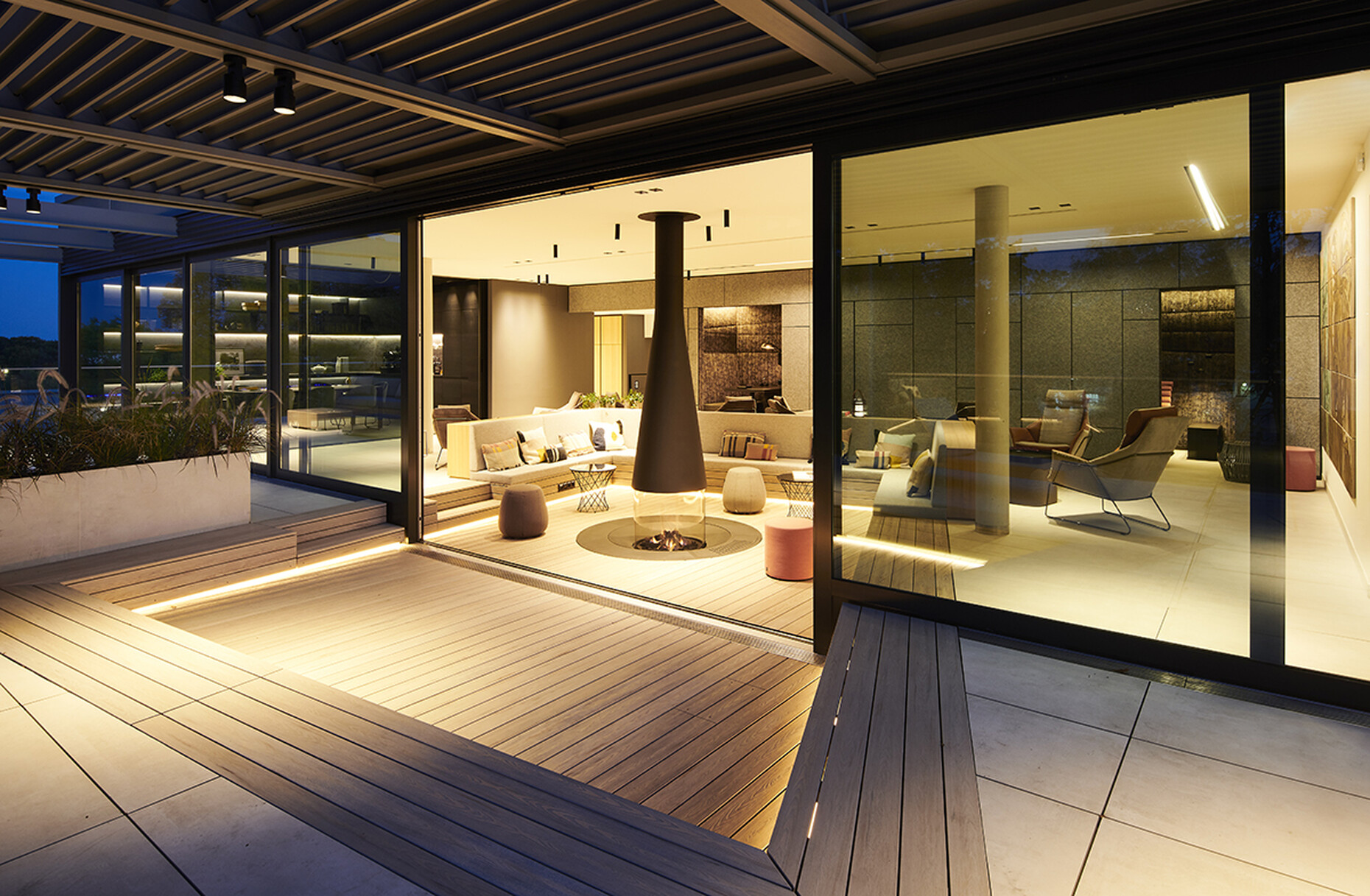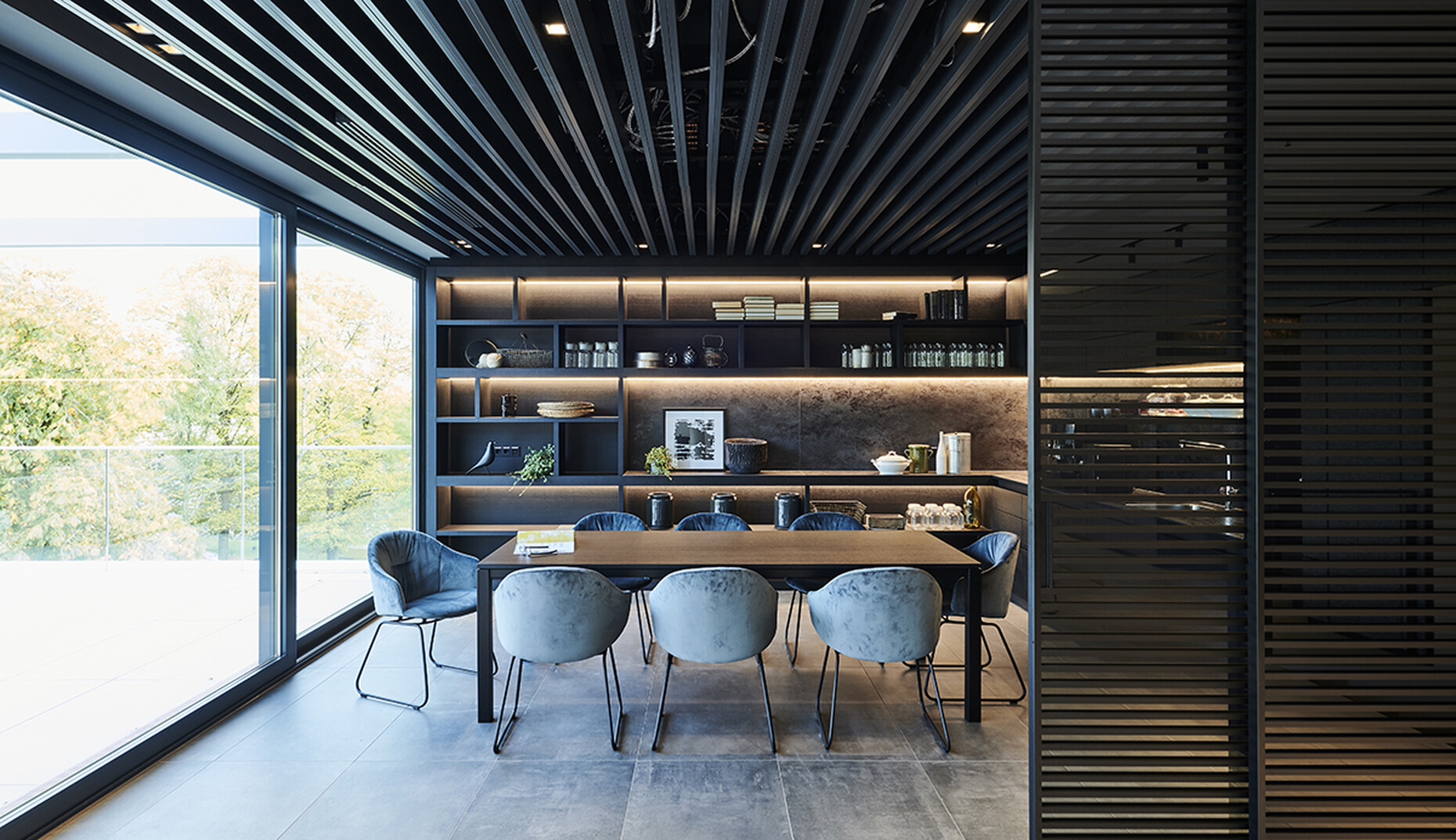STYLEPARK SIGEL
A cool head in turbulent times
The range of projects that Brandherm + Krumrey handle could not be more diverse, ranging from healthcare to hospitality, and from offices to retail and events. This gives them a comprehensive insight into different work environments, something that has become a major focus time and again since the start of 2020: Do we still need offices and if so, how many of them? How long do we want to remain working remotely from home? And what do we really need in order to be productive? The current agitation is met by the architects at Brandherm + Krumrey with a composure that comes from more than 20 years of professional experience. We join Susanne Brandherm to reflect on her experiences within her own day-to-day office life and her observations within the industry.
Adeline Seidel: Let’s think back over the past few months. How has the work culture changed in your offices in Hamburg and Cologne?
Susanne Brandherm: Until the lockdown, we predominantly all worked together in the office. Therefore, working remotely from home was something of a rarity. That undoubtedly has a lot to do with our industry, because rapid exchange of ideas between the project teams is simply quicker and easier across desks than it is via chat or telephone. On top of that, it’s no fun planning and drawing on a small laptop screen. Then during the spring it was just me and one colleague in the office – everyone else was working from home.
Was that a culture shock?
Susanne Brandherm: (Laughs) We were certainly all surprised at how well it functioned. We retained important formats for exchange, such as our Monday team meeting, which then just took place digitally.
Certainly, the abrupt change in day-to-day work must have brought about some lasting changes in your office. What lessons have you and your team learned from it?
Susanne Brandherm: We carried out a survey internally. On the one hand, a large proportion of the autonomous work and the goal-oriented, efficient video conferences worked well. The personal contact, though, poring over projects together in the office, the office grapevine, the well-equipped workplace – people also found they missed all of that. There are even colleagues who did not expect to come back to the office in the end at all, for whom working from home was simply not a problem. That’s why – also dictated of course by distancing rules and infection risk – we are currently operating the model of the “half office”: This means that while half the workforce is working in the office, the rest are at home.
Have you also made changes to your premises?
Susanne Brandherm: Even before the pandemic, we had communication areas for smaller team meetings and discussions, as well as places to which we could retreat when we needed somewhere quiet, so we haven’t changed anything spatially. However, we have created a large video conference area, which offers a certain level of quality both technically and spatially. On top of that, we have also learned once again to appreciate our outdoor space as an extension to the workplace and a place to meet up.
Will you be emerging from the corona crisis with a positive outlook?
Susanne Brandherm: The pandemic has fostered a fresh look at the purpose and possibilities of office spaces, and that’s a good thing. Personally, I’m still championing the office: People need the workplace grapevine, the chance meetings, and just places that are not permanently burdened by personal matters.
How are the findings and changes from the last few months impacting on current office planning?
Susanne Brandherm: We are currently sensing major uncertainty among some companies. A lot of them want to wait to see how their spatial requirements and necessities develop and are reviewing their structures and work processes. In this regard, we are able to support and advise them on the back of our many years of experience in this area. After all, our office plans incorporate a high level of flexibility and this permits various kinds of collaboration and allows you to switch between different workstations. That means our clients have also been able to respond quickly to the current changes and set up greater distances between workstations, for example, or create more spacious settings for meetings.
What do you think makes a successful office?
Susanne Brandherm: It needs as much outdoor space as possible that can be used and enjoyed at least partially even in bad weather. This represents an important extension of the space for working, meeting and recreation. Inside, it should be easy to open windows, since this has an extremely positive psychological effect, and you need generous spaces for discussion and optimal conditions to accommodate different needs in the workplace. Naturally, it depends to a great extent on the field you’re working in: An agency is structured differently to a law firm, for example, because their work processes differ considerably. Rather than a large cafeteria, it’s better to have smaller zones with conveniences like drinks, coffee, snacks and the like, and thus to facilitate informal exchange among smaller groups of people.




































